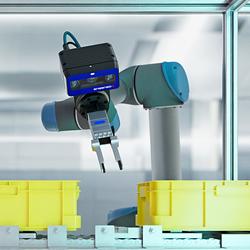Analog Devices Acquires Laser Beam Steering Technology from Vescent Photonics to Enable Mainstream Adoption of Automotive LIDAR Systems
This acquisition strengthens ADIs position as a major automotive safety system technology partner for next generation ADAS and autonomous driving applications and builds on ADIs 20-year history in advancing automotive safety.
NORWOOD, Mass.--(BUSINESS WIRE)--Analog Devices, Inc. (ADI) today announced the acquisition of a solid-state laser beam steering technology from Vescent Photonics, Inc., a privately held company based in Golden, Colorado. Vescents innovative non-mechanical beam steering technology enables more robust integrated LIDAR1 systems that overcome many of the major drawbacks associated with todays bulky mechanical offerings such as reliability, size, and cost. This acquisition strengthens ADIs position as a major automotive safety system technology partner for next generation ADAS and autonomous driving applications and builds on ADIs 20-year history in advancing automotive safety.
"From inertial MEMS sensors used in airbag and electronic stability control applications2 to 24 GHz and 77 GHz automotive RADAR, ADI solutions have helped save lives for over two decades," said Chris Jacobs, general manager of Automotive Safety, Analog Devices. "And now, this innovative technology will play an important role in making LIDAR systems more compact, more robust, and an affordable feature in every new car worldwide."
Todays ADAS systems must rely on a suite of sensor technologies that include cameras, RADAR, and LIDAR to effectively provide advanced safety features such as forward collision warning, blind spot detection, pedestrian detection, and autonomous driving functions. Cameras are used widely for object recognition while RADAR uses radio-frequency electromagnetic waves to measure distance. LIDAR uses laser beams to measure the distance and can also recognize objects. Scanning LIDAR systems can be used to detect objects on or near the roadway and fill the blind spots known to exist when using RADAR & cameras.
About Vescent Photonics
Vescent Photonics, Inc., a privately held company founded in 2002, specializes in developing and manufacturing electro-optics, tunable lasers, and electronics for precision laser control. Visit: http://www.vescent.com
About Analog Devices
Analog Devices (NASDAQ: ADI) designs and manufactures semiconductor products and solutions. We enable our customers to interpret the world around us by intelligently bridging the physical and digital with unmatched technologies that sense, measure and connect. Visit http://www.analog.com.
1 LIDAR (Light Imaging, Detection, And Ranging) is a surveying method that measures distance to a target by illuminating that target with a laser light.
2 In 1991, ADI sampled the industrys first single chip high-g MEMS accelerometer using its innovative surface micromachining technology. In 1993, ADI achieved the first volume shipments for airbag safety systems.
Featured Product

